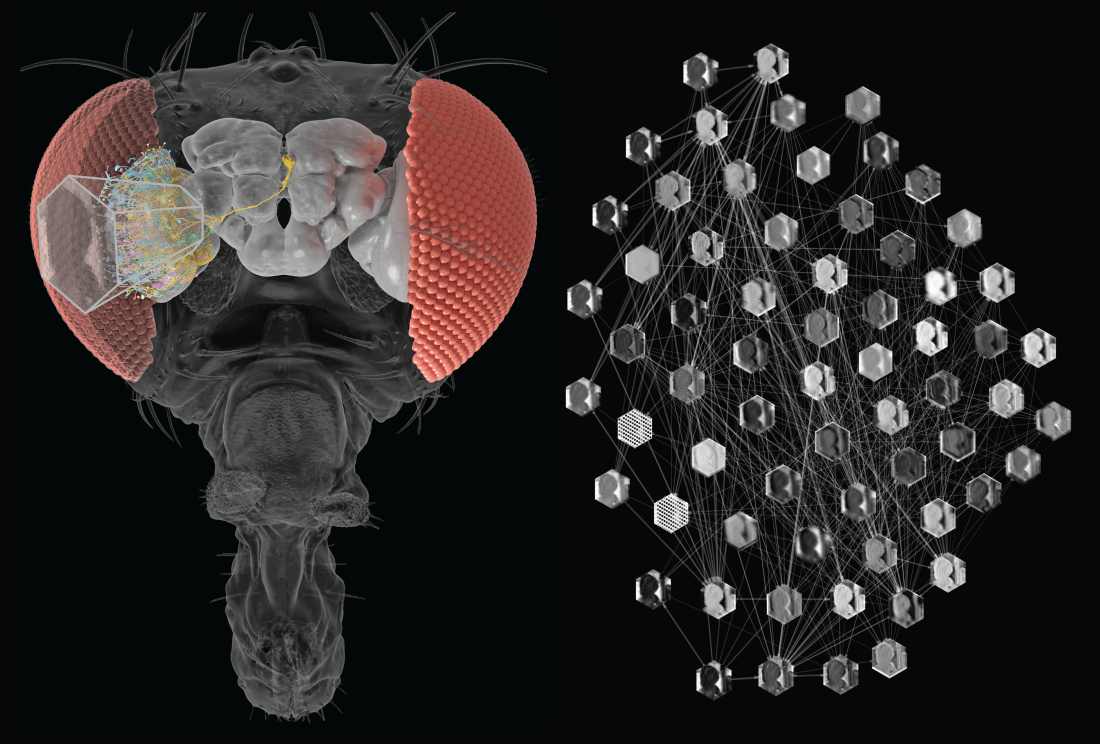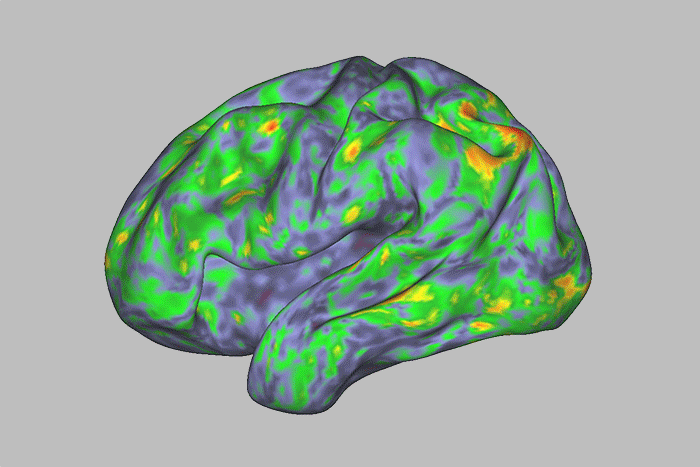
Light enters the fly’s eye, which causes photoreceptors arranged on two sides to send electrical signals through a complex network of nerves, enabling the fly to see and move.
Siwanowicz, I. & Loesche, F./HHMI Janelia Research Campus, Lappalainen, JK / University of Tübingen
hide description
toggle caption
Siwanowicz, I. & Loesche, F./HHMI Janelia Research Campus, Lappalainen, JK / University of Tübingen
Scientists have created a brain network that can predict the behavior of neurons in the living brain.
The model is based on the visual system of the fruit fly, and gives scientists a way to quickly test ideas on a computer before investing weeks or months in experiments involving real flies or other lab animals.
Srini Turaga, team leader at the Janelia Research Campus, part of the Howard Hughes Medical Institute (HHMI), says: “We can now begin to predict how a fly’s brain might work before a human does. which one should do the test measurement.”
The method, described in the paper Nature, it also suggests that power-hungry artificial intelligence systems like ChatGPT could use much less energy if they used some of the computational strategies found in the living brain.
The brain of the fruit fly is “small and powerful,” says Jakob Macke, a professor at the University of Tübingen and author of the study. “It can do a lot of math. It can fly, it can walk, it can see predators, it can mate, it can live—using only 100,000 neurons.”
On the other hand, AI systems often require computers with billions of transistors. Globally, these systems consume as much energy as a small country.
“When we think about AI now, the main charge is to make these systems more efficient,” says Ben Crowley, a neuroscientist at Cold Spring Harbor Laboratory who was not involved in the study.
He says borrowing techniques from the fly brain could be one way to do that.

A biologically based model
The virtual brain network was made possible by more than ten years of intensive research into the structure and function of the fly brain.
Much of this work has been done, or funded, by HHMI, which now has maps showing every neuron and every connection in the insect’s brain.
Turaga, Macke and PhD candidate Janne Lappalainen were part of a team that thought they could use these maps to create a computer model that would behave like the visual system of a fruit fly. This system is responsible for most of the animal’s brain.
The team started with the fly link, a detailed map of the connections between neurons.
“That tells you how information can flow from A to B,” Macke says. “But it doesn’t say whether [route] it is actually taken by the system. ”
Scientists have been able to capture activity in the brains of living fruit flies but have no way to capture the activity of thousands of neurons responding to signals in real time.
Macke says: “The brain is so complex that I think the only way we will be able to understand it is by making the right examples.
In other words, by simulating the brain, or part of the brain, in a computer.
So the team decided to model the brain circuits that allow the fruit fly to detect movement, such as the approach of a rapidly moving hand or fly swatter.
“Our goal was not to build the best compass in the world, but to find out what it does the way a fly does it.”
The team started with 64 types of neurons, all connected in the same way they would be in a fly’s visual system. The network then “views” video clips that show different types of movements.
Finally, an artificial intelligence system was asked to study neural activity while video clips were playing.
Finally, the method provided a model that could predict how each neuron in the artificial network would respond to a particular video. Surprisingly, the model also predicted the response of neurons in real fruit flies that had seen the same videos in earlier studies.
A tool for brain science and AI
Although the paper describing the model has just come out, the model itself has been around for over a year. Brain scientists have noticed.

“I use this model in my work,” says Cowley, whose lab studies how the brain responds to external stimuli. He says this model has helped him gauge whether ideas are suitable for testing in animals.
Future versions of the model are expected to go beyond the visual system and include functions beyond motion detection.
Macke says: “We now have a blueprint for how to build whole-brain models that do interesting math.”
#met #fly #beautiful #model #brain #born
